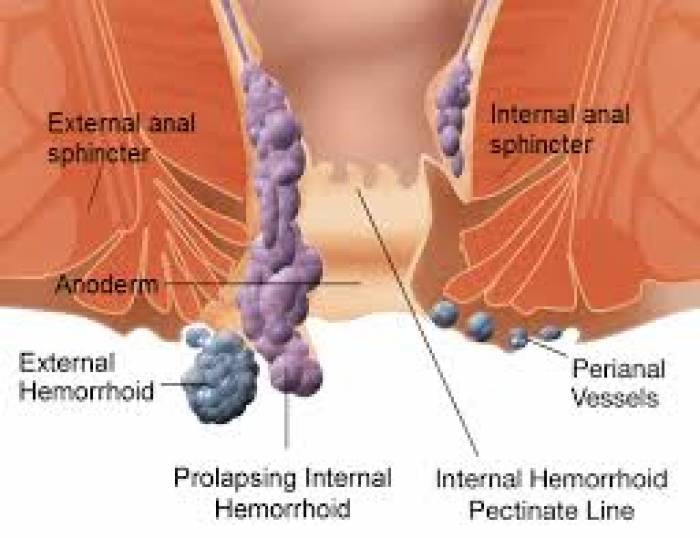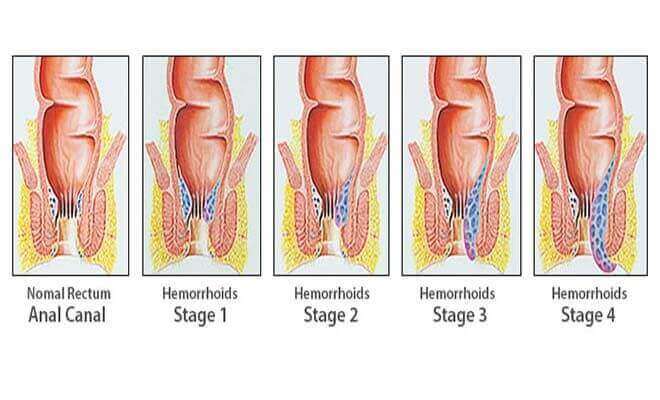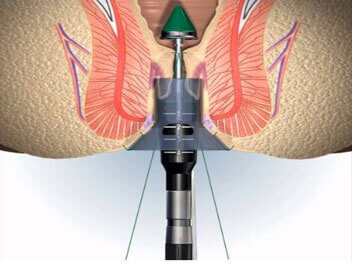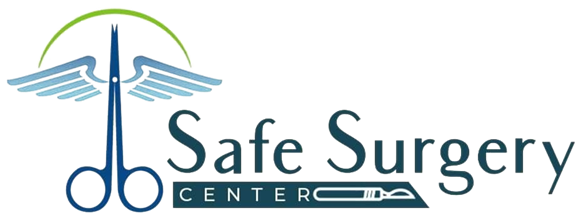
piles
What are Piles?
The rectum is the end part of the large intestine that further ends up by attaching to the anus (opening at the end of the digestive tract from which stools passes out of the body). Which in addition of many other structures contain anal cushions. Anal cushions inside the Anal canal are generally positioned at 3,7 & 11 o clock.
The functions of these cushions are to maintain anal continence and passage of stools they differentiate between passage of gas and stools. Piles medically termed as Haemorrhoids are swollen veins in the anus. There are two types of Haemorrhoids/Piles which can be classified as internal piles and external.
What are the types of piles?
Internal Piles:
Internal piles occur inside the lower rectum which eventually may protrude or prolapse out through the alimentary canal. Most prolapsed Hemorrhoids shrinks back and travel inside the rectum on their own. This type of piles can't be seen with naked eyes but they may infrequently or continuously cause uneasiness even while sitting.
During the bowel movement when straining happens it might harm the lump and can lead to bleeding while sometimes it can push internal hemorrhoid out through the anal opening. Internal piles can result in unbearable pain and uncontrollable irritation and in rare cases, these Hemorrhoids/Piles may protrude permanently outside the rectum and require urgent surgical treatment.
| Piles Grade | Description | Symptoms | Description |
|---|---|---|---|
| Grade-I | Piles are in internal canal. There is no protrusion | Bleeding | Grade I piles can be treated by medicines & ointments. |
| Grade-II | Piles are in internal canal and it usually slid down with every bowel movement | Irritation and bleeding may occur | Grade II piles can be treated by medicines & ointments. |
| Grade-III | The hemorrhoid may protrude past the anal verge. Stage III piles requires the patient to push them inside manually. | Increased irritation, bleeding. And protrusion of mass during defecation | Surgery |
| Grade-IV | The internal hemorrhoid is always protruded or prolapsed and is at risk for thrombosis and can’t be pushed back. | Itching, bleeding and pain may occur | Surgery |
What are the Stages?

External Piles:
This type of piles is formed under the skin around the anus that causes itchiness, irritation and sometimes bleeding while passing stools. External haemorrhoids can cause severe pain, swelling and inflammation if blood gets clotted in these vessels. Clotted piles usually leads to unbearable pain and discomfort, the blood clot can be removed with surgical treatments to relieve the symptoms.
What are the symptoms?
The Hallmark symptom with internal Haemorrhoids condition is painless bleeding while passing stools. Blood usually is bright red and appears in drops. Prolapsed Hemorrhoids usually cause extreme pain, discomfort, and anal itching during excretion whereas piles that are not prolapsed are not usually painful.
The symptoms such as itching and irritation may occur with excessive straining, rubbing, or cleaning around the anus and may get worse over times. These symptoms may go away after a few days while some people may never have symptoms but suffer from piles.
What are the risk factors?
Piles are caused because of swelling in the anal or rectal veins, which could be caused because of the following reasons:
- Genetical factor
- Being human (as piles is not seen in any four-legged animals)
- Weight gain or being overweight
- Insufficient fibre in the diet plan
- Prolonged sitting on a toilet seat
- Chronic constipation or diarrhoea
- Insufficient intake of water
- Heavyweight lifting
- Lack of exercise
- Straining while passing stools
- Increasing age
- Pregnancy
- Hypothyroidism
- Weak connective tissues in the rectum and anal canal
How to diagnose?
- Patient’s medical history gives clues about the pertinent condition.
- Physical examination of rectum and anal canal.
- Techniques such as Anoscopy/Proctoscopy or colonoscopy can be used for diagnosis.
How can Piles be prevented?
- Eating food containing high-fiber:( oranges, oatmeal, Lentils, and Broccoli).
- Daily exercise.
- Drinking around 7 to 8 glass of water daily.
- Avoiding tea, coffee and cold drinks.
- Stopping smoking and avoiding alcohol.
Who are the eligible candidates for treatment?
Patients who are diagnosed with grade II, III and IV hemorrhoidal disease require treatment from experts in treating haemorrhoids/piles. These grades of piles could be characterized by some of the symptoms such as bleeding along with stool or on toilet paper, anal lumps, itching, occasional pain with intermittent prolapse of internal haemorrhoids/piles.
Hemorrhoids (piles) care at DR KARAN R RAWAT, safe surgery center Multispeciality Clinic,agra
safe surgery center Healthcare team
Specialists in proctology work with other medical professionals, as needed, to diagnose and treat your hemorrhoids aka Piles.
Choose Advanced diagnosis and treatment
Proctologist at safe surgery center offer the most advanced treatment options, including stapler haemorrhoidectomy and advanced laser techniques for hemorrhoid removal.
What are the treatment options?
Surgical Treatment:
Stapled hemorrhoidopexy

Staples haemorrhidopexy/PPH employs a unique circular stapler which reduces the degree of prolapse by excising a circumferential strip of mucosa from the proximal anal canal. This has the effect of pulling the hemorrhoidal cushions back up into their normal anatomical position. Usually, the patient will be under Spinal/general anaesthesia.
Laser Hemorrhoid Ablation and Laser Hemorrhoidoplasty
In present times, emphasis is on painless and minimally invasive procedures. At Safe surgery center we treat piles and related issues with highly advanced Diode LASER 1470 nm technology which provides relatively painless and highly effective treatment for the Haemorrhoidal disease.
dr karan r rawat



